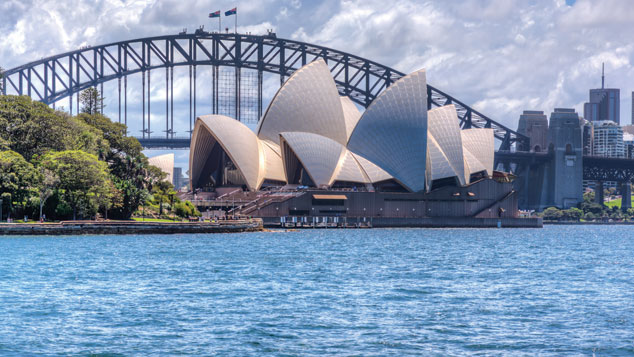
“There’s no country on Earth that’s derived more benefit from the… industrialisation of China over the last 30-odd years than Australia,” economist Saul Eslake tells Bloomberg. The Middle Kingdom is the main reason Australia has just notched up 103 successive quarters – almost 26 years – of growth. It has not suffered a recession, defined as two consecutive quarters of economic contraction, since 1991.
Coal and iron-ore exports, along with a well-timed stimulus package, kept Australia afloat during the global financial crisis. And while China’s commodities-fuelled infrastructure splurge is winding down, “China wants ever more Oz”, as The Economist puts it. Wine sales are climbing by 50% a year. So soft commodities have, to some extent, taken over from hard ones. Australia has also developed its tertiary education sector, which has led to a rise in fee-paying students from China and elsewhere in Asia.
Australia allowed its currency to float and ended political interference at the central bank in the 1980s. The sliding Aussie dollar and sharp reductions in interest-rates in the past few years made it easier for other sectors to take up the slack when the mining boom waned a few years ago. In New South Wales, the most populous state, investment in non-mining industries has been climbing by 10% a year since 2013. As in many other Anglo-Saxon economies, a housing boom encouraged consumption. High immigration has also fuelled growth.
So can Australia keep going? The annual rate of growth is down to 1.7%, the slowest since 2009. Household debt is eye-wateringly high and houses vastly overpriced following a 66% increase in value since the crisis. Growth looks set to slow as households ease up, but an uptick in the mining sector, thanks to China’s latest stimulus package, along with the soft commodities upswing, seems likely to keep the show on the road for now. With government debt comparatively low and interest rates at 1.5%, there is scope for further stimulus. “This year may well be tricky, but the luck is unlikely to
run out altogether,” says Jonathan Eley in the FT.
But stocks may struggle. Miners comprise just 13% of the benchmark index, while the biggest non-resource companies depend heavily on the domestic market, says Eley; banks account for 45% of the index. In addition to “squeezed consumers, they are facing higher energy costs and extra taxes”.
Japan holds growth record
It has been widely reported that Australia’s growth streak is a modern record, eclipsing the 1982-2008 run seen in the Netherlands. But this is wrong on two counts, says Capital Economics. For starters, the Dutch actually suffered a recession in 2003, a 0.3% quarterly decline followed by a fall of 0.01%. It was a minuscule reversal, but still, strictly speaking, a recession.
Nonetheless, even if you ignore falls in GDP smaller than one decimal place, both Australia and the Netherlands are actually still some way behind Japan’s run. It grew for 132 quarters, 33 years, from 1960 to 1993. And although quarterly data for the pre-1960 period is not available, the cracking 8.5% annual pace during the 1950s suggests the country’s winning streak was even longer.
But what about the overall progress made by these countries? Again, Japan tops the league. In 1982-2003 the Netherlands expanded by 79%. Australia grew by 105% in its first 21 years, and is up by a total of 126% now. But the Japanese economy grew by 334%, 425%, and 590% respectively during the 21, 26 and 33 years of its 1960-1993 run.